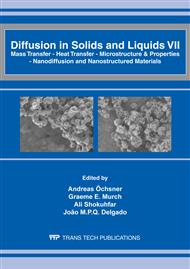p.313
p.318
p.324
p.330
p.335
p.341
p.348
p.354
p.360
Microstructure and Mechanical Properties Evaluations of Heat Treated Dissimilar Metal Joint Weldment between API 5CT C90 and ASTM A182 F22
Abstract:
In this research, post-weld heat treatment (PWHT) of dissimilar API 5CT C90 and ASTM A182 F22 welded pipe was carried out at temperatures of 500, 600, 700 and 800°C. The effects of PWHT on the microstructure and mechanical properties of the weldment were investigated. The mechanical tests and microstructure examinations were focused on the fusion line area of API 5CT C90 as this area is the most crucial part of the weldment. The main objective of this research is to assess the microstructure and mechanical properties of the dissimilar weldment. The results were then compared with NACE MR0175/ISO15156 code which requires hardness values below 275 Hv10 at a cap, below 250 Hv10 at a root and an average value 42 Joules at-20°C for charpy impact test [. The experimental results show that PWHT reduces the hardness value and increase the toughness of the weldment. Meanwhile, the optical microscopic examination shows that the higher the PWHT temperature, the coarser the grain size. The results showed that the 800°C PWHT specimen complied with the code.
Info:
Periodical:
Pages:
335-340
Citation:
Online since:
April 2012
Price:
Сopyright:
© 2012 Trans Tech Publications Ltd. All Rights Reserved
Share:
Citation:


